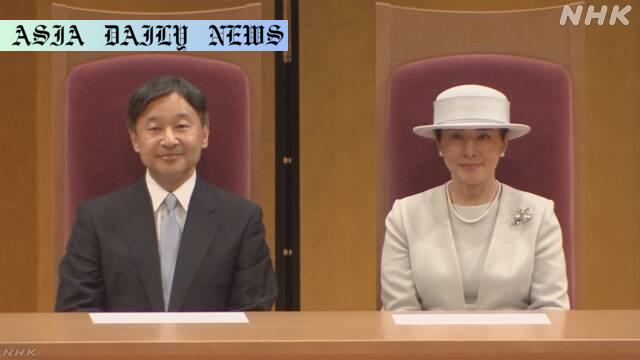Emperor Naruhito embarks on a historic journey to Mongolia for an 8-day visit, commemorating history and fostering cultural ties.
Emperor Naruhito and Empress Masako start their first visit to Mongolia as the Japanese Imperial Couple.
Itinerary includes cultural exchanges, commemorations, and attending Mongolia’s Naadam festival.
The visit symbolizes strengthened ties and marks a momentous historical step.

A Historic Journey to Strengthen Ties
Emperor Naruhito and Empress Masako are embarking on a groundbreaking journey to Mongolia, signifying both a historical and emotional milestone. Scheduled to depart from Tokyo’s Haneda Airport aboard a government plane, the couple will be the first-ever Japanese Monarchs to visit Mongolia. This visit not only marks a step forward in strengthening bilateral ties but also serves as an opportunity to honor the historical sacrifices and events linking the two nations.
The schedule promises engagement in Mongolia’s rich traditions and poignant reflections on the shared past. Among the most significant moments will be their homage to Japanese nationals who tragically passed away during the difficult post-World War II era. The Emperor will lead a tribute at a monument for these individuals, underscoring Japan’s efforts to remember and reconcile its history.
Exploring Mongolia’s Rich Culture
As state guests, the Imperial couple will receive the warm hospitality emblematic of Mongolian culture. A unique aspect of their visit is the special welcome ceremony in a traditional Mongolian ger. These traditional tent-like structures provide an authentic taste of Mongolian heritage and distinctiveness. Following this, they will have the opportunity to meet Mongolia’s President Ukhnaa Khurelsukh and his wife, further cementing diplomatic and cultural ties between the two countries.
The commitment to understanding Mongolia extends to their attendance at the Naadam festival. This renowned national sports festival celebrates Mongolia’s ancient traditions of horse racing, wrestling, and archery — providing the perfect platform for the Emperor and Empress to immerse themselves in the country’s colorful cultural tapestry.
Environmental Conservation and Cultural Engagement
In addition to cultural exchanges, Emperor Naruhito and Empress Masako will visit national parks to explore Mongolia’s natural beauty, including sanctuaries for rare animal species like the wild Przewalski horse. The couple is expected to gain deeper insights into the environmental and ecological efforts championed by Mongolia, showcasing the nation’s dedication to preserving its unique ecosystem.
This visit not only symbolizes a diplomatic and cultural milestone but also provides an occasion to deepen the Japanese Imperial Family’s understanding of sustainable environmental practices. Their itinerary reflects Japan’s broader commitment to fostering global cooperation and environmental preservation.
A Diplomatic and Emotional Milestone
The visit comes at a time of reflection, as 80 years have passed since the end of World War II. The Emperor and Empress’s homage to the Japanese individuals who lost their lives due to harsh labor in the aftermath of the war highlights their commitment to honoring the past and promoting reconciliation. It serves as a reminder of the lessons learned from history and the necessity for continued international understanding.
The trip also underscores the increasing importance of cultural diplomacy, as Japan and Mongolia commemorate this historic occasion. By engaging with the local community, attending cultural festivals, and participating in moments of remembrance, the Imperial couple represents Japan’s dedication to building bridges of friendship and cooperation on a global scale.
Commentary
The Significance of this Historic Visit
Emperor Naruhito and Empress Masako’s visit to Mongolia stands as a significant moment in both diplomatic history and cross-cultural understanding. For the first time, a Japanese Emperor and Empress are stepping into Mongolia, signaling the depth of the two nations’ commitment to fostering stronger ties in an ever-globalizing world. Such visits are not just symbolic; they serve as beacons of goodwill, representing the connection between history, diplomacy, and cultural exchange.
Commemorating the Past
This trip has a poignant undertone as it comes on the 80th anniversary of the end of World War II. The Emperor and Empress’s decision to pay tribute to the Japanese nationals who lost their lives in Mongolia after being detained following the war shows their dedication to reconciliation and the remembrance of history. It also highlights the importance of acknowledging painful historical chapters, which helps in shaping a more harmonious future.
Cultural Insights and Environmental Focus
What makes this visit truly remarkable is the Imperial couple’s immersive approach to understanding Mongolia. By participating in events like the Naadam festival, as well as visiting ecologically significant areas, they demonstrate a desire to connect with not just the government, but also with the people, culture, and environment of Mongolia. These actions reinforce the importance of shared learning and international cooperation on pressing global issues, such as environmental conservation.
Overall, this journey represents not just a diplomatic event but also an opportunity for cultural bridge-building. The warm reception awaiting the Emperor and Empress in Mongolia highlights the shared respect and mutual admiration between these two nations, emphasizing the enduring power of cultural diplomacy in fostering global harmony.


